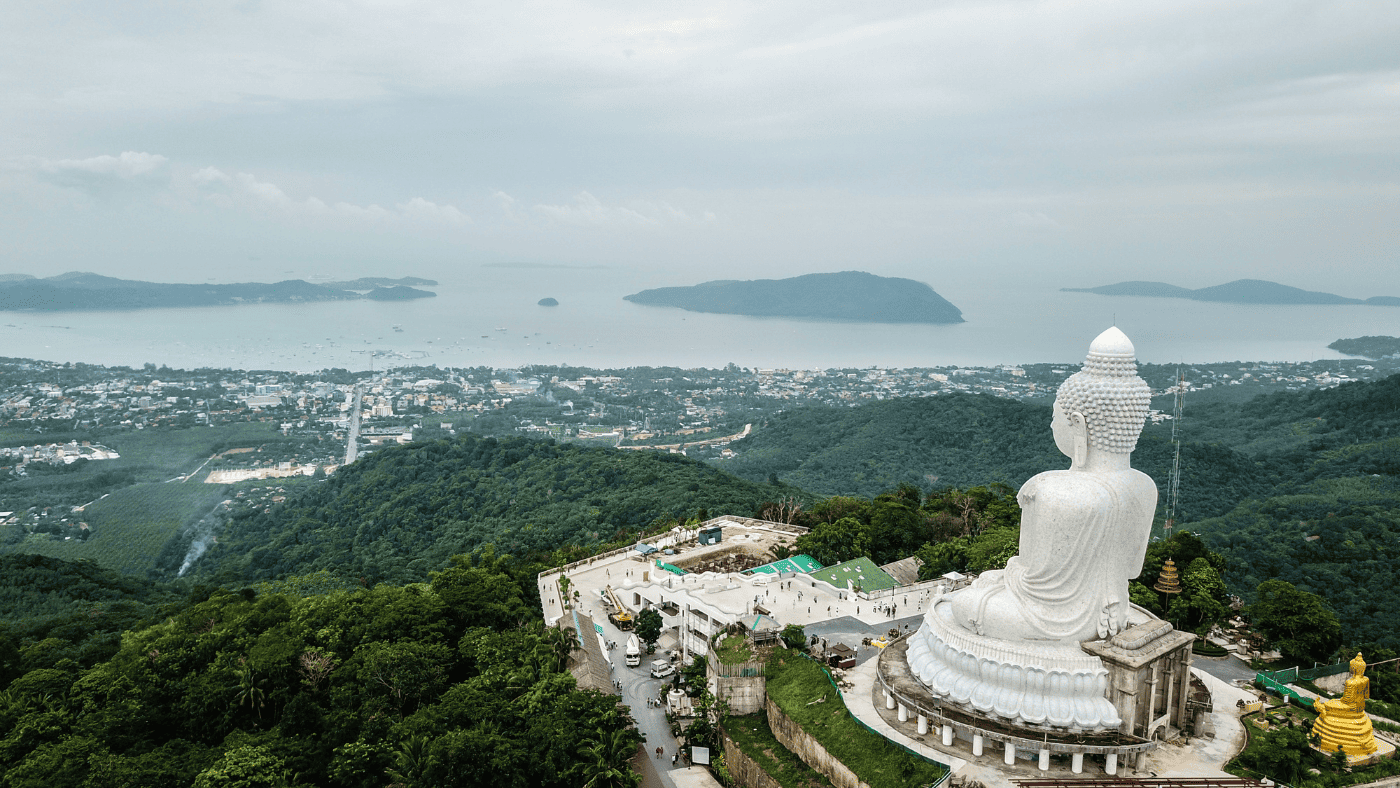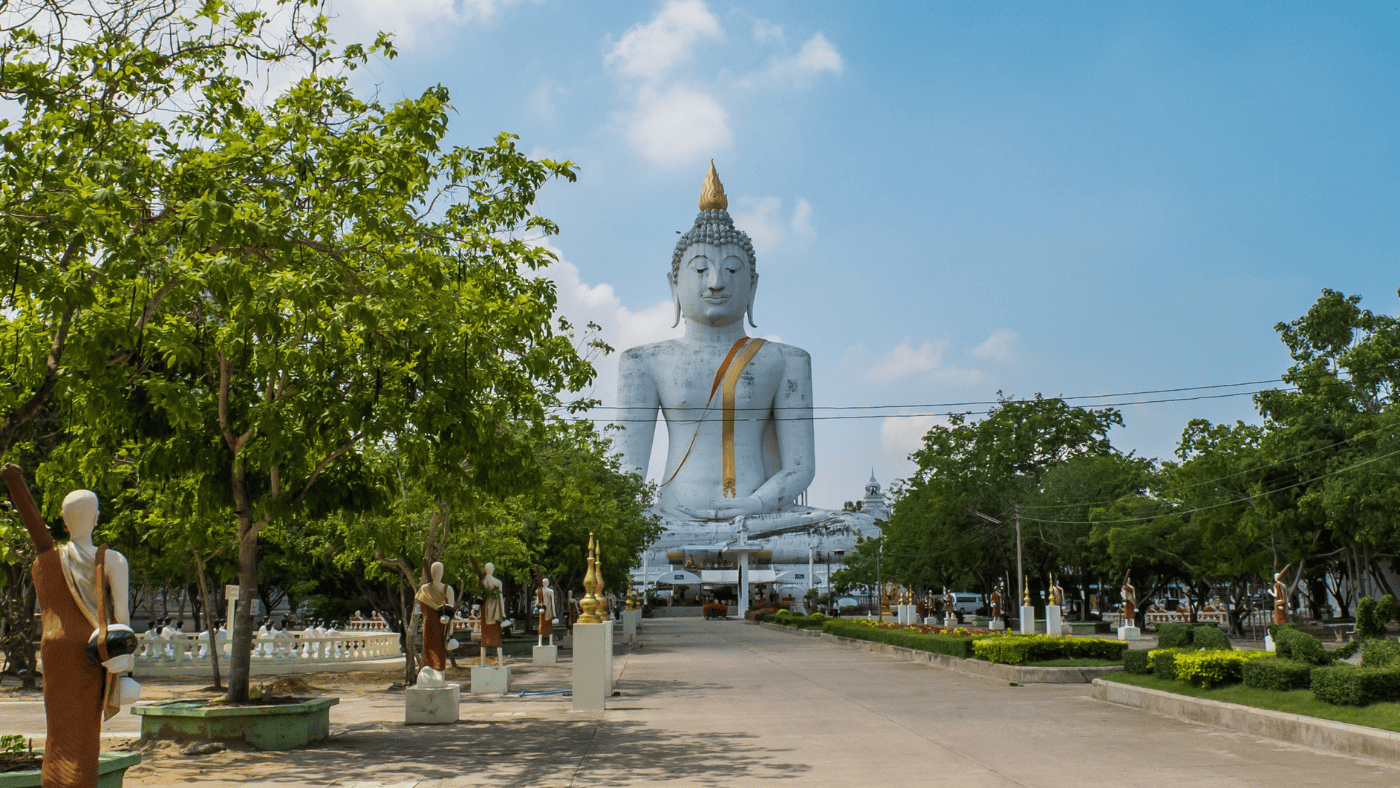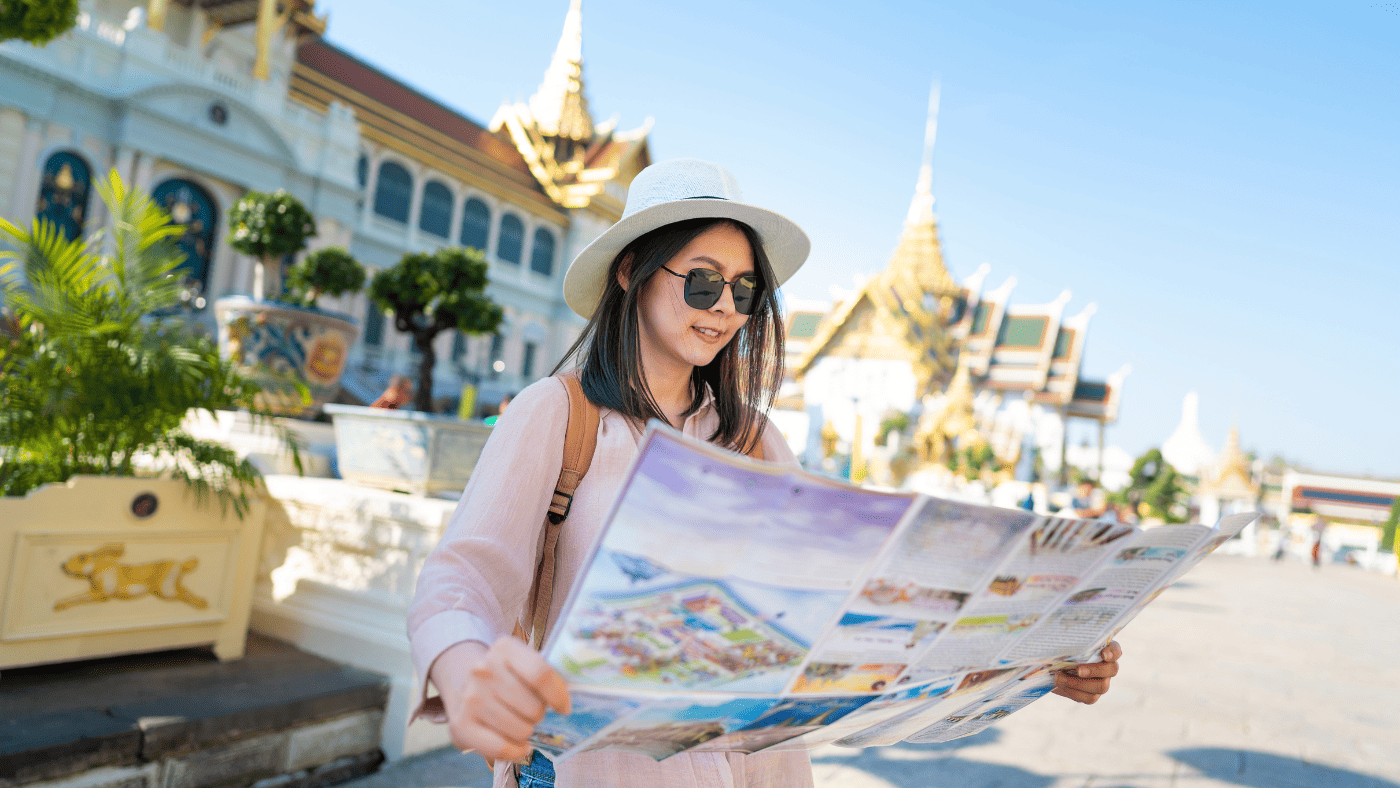The Big Buddha, also known as Tian Tan Buddha, is a towering 34-meter bronze statue situated on top of a hill on Lantau Island in Hong Kong. The awe-inspiring landmark is one of the most popular tourist attractions in Hong Kong, attracting millions of visitors each year. In this guide, we’ll take a closer look at the history of the Big Buddha, transportation options, nearby attractions, exploring the Big Buddha Complex, and tips for making the most of your visit.
The History of the Big Buddha

Origins and Construction
The Big Buddha, also known as the Tian Tan Buddha, is a statue located on Lantau Island in Hong Kong. The idea for the statue dates back to the 1970s when a group of Buddhists proposed building a statue in honor of their faith. The construction began in 1990 and was completed 12 years later in 2002. The statue is made of 202 bronze pieces and stands at a height of 112 feet tall, weighing over 250 tons. Its construction required the use of advanced technology and engineering techniques.
The statue’s construction was a massive undertaking, requiring the movement of thousands of tons of earth and rock to create a stable foundation. The statue’s bronze pieces were cast in mainland China and transported to Hong Kong for assembly. The construction process was also a significant feat of engineering, requiring the use of cranes and other heavy machinery to lift the massive pieces into place.
Cultural Significance
The Big Buddha is an important symbol of Buddhism, representing harmony between man and nature, people and faith, and faith and the universe. The statue’s location on Lantau Island is significant, as it’s believed to be a place of spiritual energy. The statue’s position facing north is also significant, as it’s believed to protect the people of Hong Kong from evil spirits.
Aside from its religious significance, the Big Buddha is also a significant tourist destination, drawing visitors from all over the world who come to admire its grandeur and immerse themselves in its cultural significance. Visitors can climb the 268 steps to reach the statue’s base and enjoy panoramic views of the surrounding mountains and sea.
Restoration and Preservation Efforts
Since its construction, the statue has undergone several restoration and preservation efforts to keep it in its pristine condition. The first major restoration took place in 2003, where the statue’s exterior was cleaned and repainted. In 2017, the statue underwent another major restoration, where workers replaced the bronze coating and added a layer of gold to the statue’s exterior to protect it from corrosion.
The ongoing maintenance work ensures that the statue continues to shine brightly for generations to come. The statue’s location on Lantau Island also provides a unique challenge, as it’s exposed to the elements and requires regular maintenance to prevent erosion and damage from the elements.
Overall, the Big Buddha is a remarkable feat of engineering and a significant symbol of Buddhism and Hong Kong’s cultural heritage. Its grandeur and cultural significance continue to draw visitors from all over the world, making it a must-see destination for anyone visiting Hong Kong.
Getting to the Big Buddha

Transportation Options
The most popular way to reach the Big Buddha is via the Ngong Ping 360 cable car, which offers breathtaking panoramic views of the Hong Kong skyline and the South China Sea. Alternatively, you can take a bus or taxi. The easiest way to get there is by taking the MTR to Tung Chung Station and then taking the cable car or a bus to Ngong Ping Village.
Best Time to Visit
The Big Buddha is open year-round from 10 am to 5:30 pm. The best time to visit is during the weekdays when the crowds are smaller. However, if you’re visiting during peak season, be prepared to wait in long lines, especially for the cable car.
Nearby Attractions
There are plenty of other attractions to explore in the area, such as the Po Lin Monastery, the Wisdom Path, the Ngong Ping Village, and the Tai O Fishing Village. You can also take a hike on one of the many scenic trails that offer stunning views of Lantau Island and the surrounding area.
Exploring the Big Buddha Complex

The Grand Staircase
As you make your way up to the Big Buddha, you’ll climb the majestic Grand Staircase, which consists of 268 steps. Each step represents a different virtue that leads to enlightenment, such as perseverance, wisdom, and compassion.
Po Lin Monastery
The Po Lin Monastery is a beautiful Buddhist temple that was founded over a century ago. Visitors can explore the temple’s many halls, admire its ornate architecture, and even try some of the vegetarian cuisine offered in the temple’s dining hall.
Wisdom Path
The Wisdom Path is a scenic trail that winds through the lush mountainside and is lined with giant wooden pillars inscribed with Buddhist scriptures. The path is a serene escape from the hustle and bustle of the city below.
Viewing Platforms and Scenic Spots
Once you make it to the top, you’ll be rewarded with breathtaking views of the surrounding landscape. Be sure to check out the Big Buddha’s giant bell, which offers a unique and soothing sound when rung, and the surrounding viewing platforms that offer panoramic views of the South China Sea and beyond.
Tips for Visiting the Big Buddha

What to Wear
Be sure to wear comfortable shoes and dress appropriately for the weather. Given the hot and humid climate, we suggest that you wear light and breathable clothing and bring along a hat or sunscreen for protection.
Photography Guidelines
If you plan on taking photos, be mindful of other visitors and don’t obstruct the walkways or prevent others from enjoying the experience. Additionally, make sure to respect the cultural significance of the site and don’t take inappropriate or disrespectful photos.
Food and Dining Options
There are plenty of dining options in and around the Big Buddha Complex, ranging from street vendors to upscale restaurants. Be sure to try some of Hong Kong’s famous dim sum or vegetarian delicacies from the Po Lin Monastery’s dining hall.
Souvenirs and Shopping
If you’re looking for souvenirs or gifts to take home, the Ngong Ping Village has plenty of shops and stores offering everything from traditional crafts to modern gadgets.
Final Thoughts
The Big Buddha is a must-see attraction for anyone visiting Hong Kong. Whether you’re a seasoned traveler or a first-time visitor, the landmark’s breathtaking views, cultural significance, and rich history are sure to leave a lasting impression. With this guide, you’ll be well-equipped to make the most of your visit and explore all that the Big Buddha Complex has to offer.

